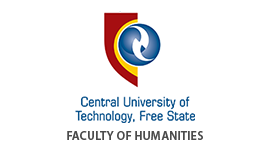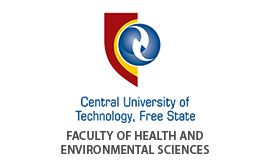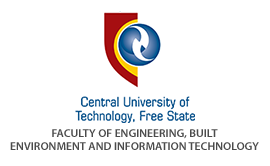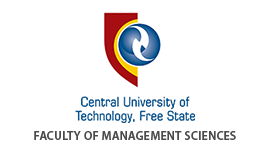Deputy Minister of Science, Technology, and Innovation launches locally developed disability technologies to champion inclusive innovation

Some of the Ka Dah device recipients and beneficiaries celebrating a milestone in inclusive innovation. These locally developed tools, mark a transformative step toward independence, dignity, and digital accessibility for people with disabilities. Pictured with the beneficiaries: Prof. Pamela Dube, CUT Vice-Chancellor and Principal (left), Dr Mantlhake Julia Maboya, Free State MEC of Education (middle), Ms Nomalungelo Gina, Deputy Minister of Science, Technology and Innovation (right) and Mr. Tieho Tsiane, Ka Dah inventor (back row).
The Deputy Minister of Science, Technology, and Innovation, Nomalungelo Gina, officially launched four transformative and locally developed technologies aimed at supporting and empowering people living with disabilities. The launch coincides with Psycho-Social Disability Awareness Month and highlights South Africa’s commitment to inclusive innovation under the G20 theme of Solidarity, Equality, and Sustainability.
The technologies, namely, Ka-dah, WeSignIt, Virecom and ShazaCin, were created by and for people with disabilities through close collaboration between researchers, grassroots social entrepreneurs, and communities with lived experience.
The Ka-Dah device was developed by the Free State inventor, Mr. Tieho Tsiane, in partnership with the CUT Product Development Technology Station (PDTS). It is a wearable device designed for visually impaired individuals to operate smartphones without touching the screen. It pairs a Bluetooth earpiece with voice navigation for hands-free interaction. According to Tsiane, the invention was inspired by a friend who lives with ptosis, a condition where the upper eyelid droops, partially or completely covering the eye.
In her welcome address, Vice-Chancellor and Principal, Prof. Pamela Dube, emphasised the university’s commitment to inclusive technology. “Today, we launch four technologies that will support institutions serving people with disabilities. This launch marks the continuation of our journey towards that goal, a journey we cannot undertake without the active partnership of our students, staff, and the public.”
Prof. Dube celebrated the Ka-Dah Device as not just a technological marvel, but a tool that will empower visually impaired individuals to use their smartphones like never before, providing an intuitive and straightforward user experience. “This initiative proudly reflects our university's dedication to uplifting communities and ensuring that no one is left behind in today’s digital landscape. It exemplifies how innovation can positively impact lives and pave the way for a more inclusive society.”
Free State MEC of Education, Dr Mantlhake Julia Maboya applauded the practical value of these technologies, citing that they represent tangible steps - not dreams - toward the inclusivity they declared in the State of the Province Address earlier this year. “These are not mere prototypes, but tools meant to advance the lives of people with disabilities. These vital assistive technologies are not just any other devices, they are tools that will advance dignity, agency, mobility, communication, and independence for our people. Many were incubated through government programmes such as the Grassroots Innovation Programme and the Technology Acquisition and Deployment Fund, and are now entering critical deployment phases,” she said.
In her keynote address, Ms Nomalungelo Gina, Deputy Minister of Science, Technology and Innovation, said the technologies are symbols of inclusion, innovation, and purposeful change. They represent a future where no one is left behind in the Fourth Industrial Revolution. A future where "all means all," including youth, women, and persons with disabilities.
“As a person with partial disability myself, I cannot express how proud I am of the Department for taking this particular focus on people with disabilities as a demonstration that we are an inclusive government. What is the use of innovation and development of technological prototypes if they don’t solve problems of those in difficulty, making their lives easier to live than before?” She asked. “If we cannot drive innovation such that the vulnerable in our society get empowered, then that ecosystem of innovation is exclusionary and elite.”
She added that as a host country for the G20’s first Disability Inclusive Working Group, they are demonstrating, through action, that inclusive science, technology, and innovation must be central to national and international development.
Several special schools, including Martie du Plessis, Pholoho Special School, Tswellang Special School, Boitumelong, Boikhutso, Bartimea School for the Deaf and Blind, as well as schools from the Xhariep District, also attended the event. These schools are not only potential users and beneficiaries of the newly introduced assistive technologies but also represent key partners with whom the PDTS Medical Unit has collaborated in the development of medical assistive devices.
Uploaded: 06 August 2025
CUT Hosts First Convocation Induction Following Reconstitution, Strengthening Alumni Partnership and Institutional Governance
Members of the convocation celebrate a new chapter in CUT’s alumni governance. The Central University...

CUT Formalises Strategic Collaboration with Henan University of Engineering
Back row: Prof Yue Guoning, Professor, School of Management Engineering, Mr Liu Rugu, Director: International...

CUT Council tours key campus facilities and residences
CUT Chairperson of Council, Cllr Rajesh Mahabeer, accompanied by Vice-Chancellor and Principal, Prof....



